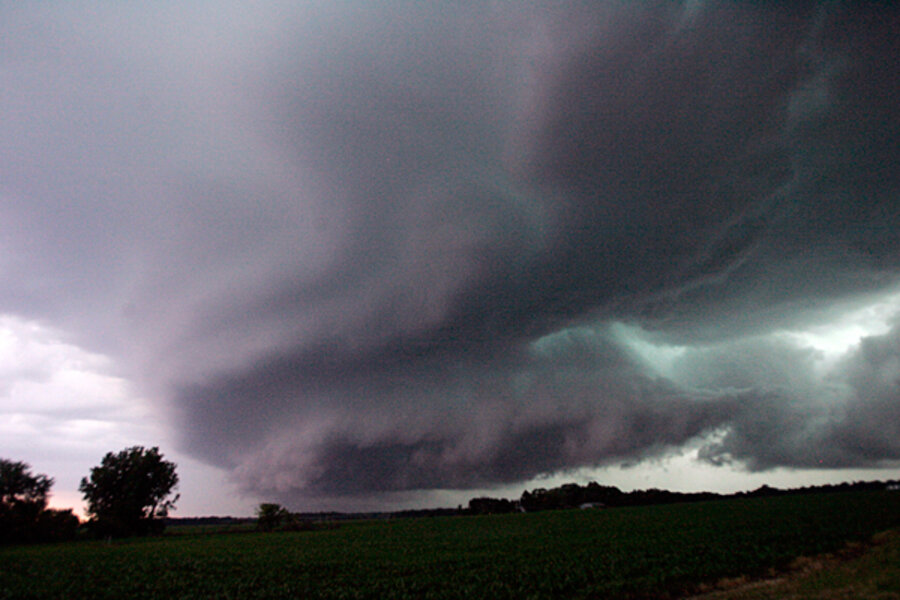Severe weather forecast: Worst could be from Delaware to North Carolina
Loading...
| New York
It could be a day and night of turbulent weather for parts of the East Coast, with the possibility of powerful thunderstorms, gale-force winds, and maybe tornadoes, weather forecasters warn.
The worst of the weather could stretch from Delaware to North Carolina.
Only a year ago, a line of severe thunderstorms raced through Maryland, Virginia, and the District of Columbia with powerful straight-line winds, called a derecho, that knocked out power lines and blew houses apart. However, the new storms will not have the same characteristics, says Henry Margusity, a meteorologist and severe-weather expert for AccuWeather.com.
“This is just a big storm system coming through with a lot of thunderstorms around it,” he says.
The powerful system, which was over the Ohio Valley as of noon on Thursday, is also expected to bring heavy rain to New York and New England. Since the ground is already very wet, there is concern that some trees could topple, bringing down power lines.
The Jersey shore and Long Island, which are still recovering from superstorm Sandy, are expected to endure gale-force winds. But the winds are not likely to result in a storm surge, meteorologists say.
The same weather system brought 70 mile-per-hour winds, as much as two inches of rain an hour, and golf-ball-sized hail to some areas around Chicago on Wednesday. The strong winds resulted in downed power lines, leaving 78,000 customers without electricity. But by Thursday morning, crews had restored power to all but a few thousand homes.
Ninety-degree temperatures in places like Richmond, Va., and Charlotte, N.C., are expected to fuel the storm. At the same time, the atmosphere in those places has a lot of humidity in it.
“Once this system comes over the [Appalachian] Mountains, it will tap into the heat and humidity,” Mr. Margusity says.
The severe weather could result in long delays at airports from Washington to Boston. On Thursday, a line of strong thunderstorms that’s not associated with the bigger storm was already being blamed for two-hour delays at Dulles International Airport and an hour-long delay in Philadelphia.
In Ardmore, Pa., the 2013 US Open at the Merion Golf Club was delayed as heavy downpours overtook the area. Rain has been falling on the course for days, resulting in some very wet and muddy conditions for both spectators and golfers.
At 10 a.m. on Thursday, the US Golf Association said on its website that lighter rain had moved in. But thunder could still be heard, so the tournament remained suspended in the morning.
As the storm moves east, powerful northeast winds could lash the coast. The National Weather Service warned coastal areas of wind gusts of up to 35 knots and seas of four to seven feet. The worst of the winds, it said, would be from 6 p.m. on Thursday to 11 a.m. on Friday.
The good news: Most of the bad weather should be past the area by lunch on Friday, says Margusity. “The weekend should be nice,” he forecasts.







